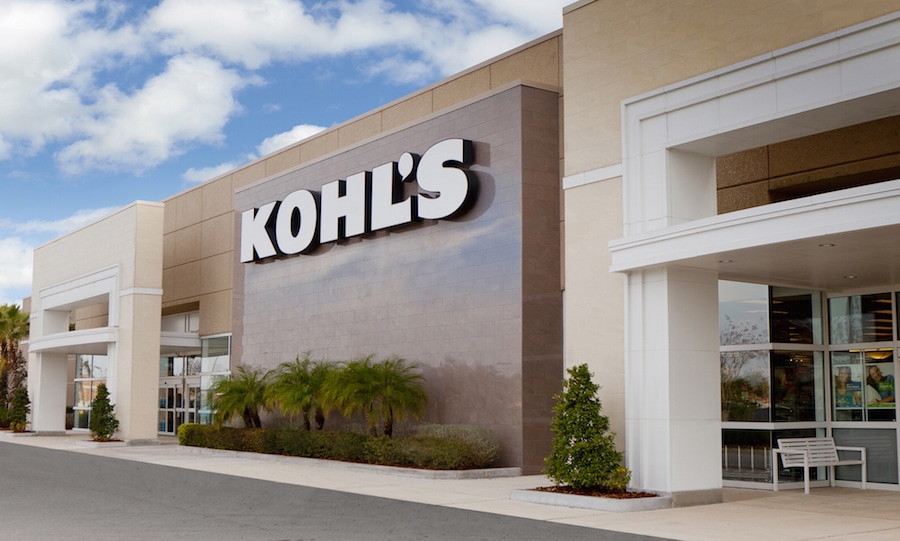Kohl’s recently announced its Greatness Agenda, a three year strategic plan to be the most engaging retailer in America. As part of its new path forward, the company declared its purpose: “to inspire and empower families to lead fulfilled lives.” It is clear to anyone who has visited a Kohl’s store or shopped Kohls.com that they have a working formula for living up to their stated purpose. What is perhaps less plain to the eye of the casual shopper is that a key component to such success is the integration of sustainability practices in the way they do their business. Here, we caught up with Rebecca Sherman, director of sustainability and development, to get the details.
gb&d: Kohl’s was one of the 2015 Energy Star Award winners. What was it about the Kohl’s brand that invited this recognition? What green initiatives in particular were highlighted?
Sherman: Kohl’s Department Stores has been a long-term supporter of EPA’s Energy Star program since 1998 and has been named Partner of the Year or Partner of the Year—Sustained Excellence annually since 2010. The impact of our partnership is measurable. To date, there are more than 970 Energy Star-certified Kohl’s locations—more than 80% of all Kohl’s stores nationwide. A major accomplishment for Kohl’s that contributed to this year’s award was achieving a 4.3% annual energy use reduction. In addition, 122 Kohl’s stores received Energy Star certification in 2014 alone. We’re proud to have the highest percentage of Energy Star-certified stores among US retailers.
gb&d: What kind of impact has Kohl’s various efforts had on its customers and their communities. What sort of responses and/ or results have you seen?

Sherman: Kohl’s Associates in Action (AiA) volunteer program fosters a culture of volunteerism across the country and encourages associates to contribute their time and talents to local youth-serving nonprofit organizations. Earlier this year, as part of the AiA program, thousands of Kohl’s associates volunteered their time across the country at youth-serving nonprofit organizations by participating in environmentally based activities as part of Kohl’s sixth annual National Go Green event.
970+
The number of Energy Star- certified Kohl’s locations, to date. 122 of which received certification in 2014 alone.
146,000
The amount (in tons) of waste Kohl’s recycled in 2014, reducing the total amount added to local community landfills.
160
The number of solar arrays Kohl’s has activated, making them one of the largest hosts of solar electricity in North America.
Kohl’s recycling accomplishments also directly impact the communities we serve. In 2014, we achieved an 86% recycling rate across our operations, surpassing our 2015 goal of 85%. Kohl’s recycled 146,000 tons of waste in 2014, reducing the total amount added to local community landfills.
Perhaps most noticeable to customers, Kohl’s provides free electric vehicle charging at select locations and several corporate offices to help customers and associates reduce their footprint.
gb&d: What does Kohl’s do to manage energy in terms of things like heating and cooling and lighting?
Sherman: Kohl’s maintains several key partnerships with organizations including Energy Star and the US Department of Energy’s Better Building Challenge to further enhance the efficiency of our stores, facilities, and corporate offices. Kohl’s facilities are equipped with a centrally monitored energy management system. All lighting, temperature, and ventilation are remotely controlled at each facility to optimize energy efficiency and ensure occupant comfort. Kohl’s store associates can concentrate on the retail aspects of the business and assisting our customers rather than worrying about the lighting and temperature of the stores.
The rooftops of many of Kohl’s buildings provide a perfect setting for solar panels. We are one of the largest hosts of solar electricity in North America, with more than 160 solar arrays, five of which were activated in 2014. Each of our solar installations generates more than 50 megawatts of onsite green power, enough to offset 20 to 50% of a store’s energy use.

gb&d: Electric vehicles are still a relatively inaccessible endeavor in the realm of green energy. What inspired Kohl’s to get involved with electric vehicle programs? Do you see this facet of the industry growing in the near future?
Sherman: Notably, Kohl’s is one of just a few retailers that offer electric vehicle (EV) charging stations to customers and associates free of charge. We currently have more than 150 EV charging stations across more than 75 stores and four of our corporate facilities. In 2014, we joined the US Department of Energy’s Charging Challenge, which encourages U.S. employers to commit to providing EV charging stations for their workforce.
gb&d: In terms of building and design, what sort of practices do Kohl’s and third party teams employ to achieve optimal sustainability, as well as practices employed in performing general ongoing maintenance for all Kohl’s locations?
Sherman: More than 460 of our buildings are certified under the US Green Building Council’s LEED rating system, nearly 40% of all facilities. Features of Kohl’s LEED stores include use of more than 20% recycled and 20% regionally sourced (by cost) building materials, use of a cool white Energy Star-rated roof and water-efficient landscaping and plumbing fixtures, among many other attributes.
Kohl’s also utilizes recommissioning to evaluate existing locations for upgrades to improve sustainability. Recommissioning gives us an opportunity to ensure energy-using equipment is in good operating condition and address any discrepancies through maintenance and replacement. The result is lower costs over time and greater energy efficiency. In 2015, Kohl’s will recommission more than 100 locations.

